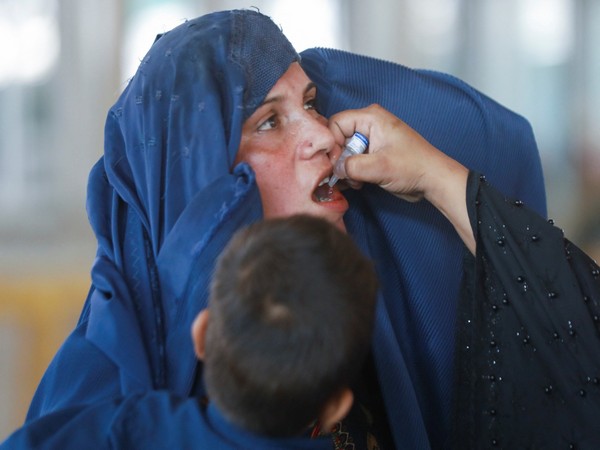
Pakistan, one of the two remaining polio-endemic countries in the world along with its neighbour Afghanistan, has kicked off a nationwide polio vaccination drive to inoculate over 16.5 million under-5 kids after the South Asian country reported the fourth case of the wild poliovirus of the year, jolting the nation's efforts to eradicate the crippling disease.
Endemic transmission of wild poliovirus is continuing in areas of Afghanistan and Pakistan, said WHO, adding that the failure to stop polio in these last remaining areas could result in global resurgence of the disease.
Pakistan's health ministry, in a statement, said that the five-day vaccination campaign comes ahead of a massive public movement expected across the country on the occasion of the upcoming Muslim festival of Eid al-Adha later this month.
According to reports, the vaccination drive will be carried out in 66 districts of Pakistan in which 33 districts will be inoculated completely with 30 districts partially.
Citing the country's health ministry, media reports said that the nationwide vaccination campaign focuses on the federal capital Islamabad, 20 districts of the southwestern Balochistan province, 23 districts of the northwestern Khyber Pakhtunkhwa province, 16 districts of the southern Sindh province, and six districts of the eastern Punjab province.
According to a report by Dawn, 2024's fourth polio case was reported on Saturday (June 1) from Shikarpur district of the Sindh province.
Dawn reported that the latest poliovirus case was reported as the Pakistani government recently appointed a new head of the polio eradication programme after his predecessor stepped down during the week.
Earlier this year, three cases of poliovirus were reported from Balochistan province.
As per the National Institute of Health in Islamabad, the newest case was also of the Type-1 Wild Poliovirus (WPV1), just like the previous three cases.
There are three serotypes of Wild Poliovirus (WPV) -- Type 1 (WPV1), Type 2 (WPV2) and Type 3 (WPV3), and two of them -- WPV2 and WPV3-- have been eradicated, while global efforts are underway to eradicate WPV1, which is still endemic in two neighbouring countries -- Pakistan and Afghanistan.
Though there has been a downwards trend in the number of reported cases per year.
The total count of wild poliovirus cases in Pakistan in 2019 was 147, compared to 84 in 2020, one in 2021, 20 in 2022, six in 2023 and four till date in 2024, as per data.
The polio immunization campaign in Pakistan started in 1974, though the efforts for eradication officially started in 1994, and the infection remains endemic despite over 100 rounds of vaccination being carried out in the past decade, reports said.
According to reports, the country had the highest number of polio cases in the world in 2014.
Pakistan has supposedly boosted up vaccination campaigns along with scaling up training programmes for vaccination workers and educating the general people of the country but it still failed to wipe it out like the rest of the world.
Last year, authorities in Pakistan's Sindh province introduced a bill that would imprison parents for up to one month if they fail to get their children vaccinated against polio or eight other common diseases.
According to a report by the Associated Press (AP), experts at the World Health Organization (WHO) worry the unusual strategy could further undermine trust in the polio vaccines, particularly in a country where many believe false conspiracies about them and where dozens of vaccinators have been shot and killed, adding to the problems faced by experts trying to persuade people of the vaccines’ safety.
In 2015, authorities in the Khyber Pakhtunkhwa province issued arrest warrants for 1,200 parents and guardians for refusing to administer vaccines to their children, and 512 people were arrested on the charge but were later freed after signing an undertaking that they would not oppose vaccination, as per reports.
Public health experts said some of the reasons which affect the eradication of polio in Pakistan are political unrest, poor health infrastructure, and government negligence.
According to them, the most afflicted areas are those where militants are present and the government lacks absolute control, such as the Federally Administered Tribal Areas, and transmission of the virus from such areas then leads to spread through other parts of the country.